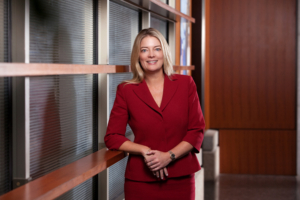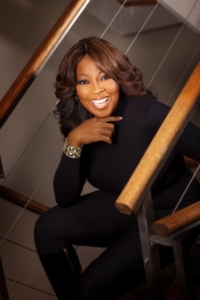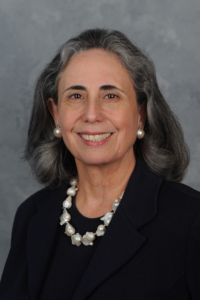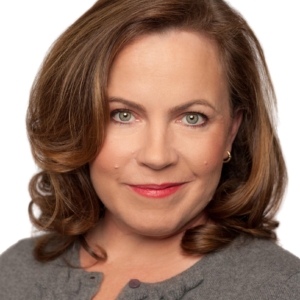 Tina Youngblood (formerly Mallie) began her career as the first woman professor of accounting, with a PhD, to receive tenure from Miami University. From there, she has carved her pathway to success with the force of lions and a graceful ease. After 7 years at the University, Youngblood took her sabbatical in New York City. During that time, she decided to leave academia for an opportunity to work for PricewaterhouseCoopers as their global chief of staff. When PwC’s CEO, Jim Schiro, left the company to lead the then failing Zurich Insurance Group, he took two people with him—Youngblood was one of them.
Tina Youngblood (formerly Mallie) began her career as the first woman professor of accounting, with a PhD, to receive tenure from Miami University. From there, she has carved her pathway to success with the force of lions and a graceful ease. After 7 years at the University, Youngblood took her sabbatical in New York City. During that time, she decided to leave academia for an opportunity to work for PricewaterhouseCoopers as their global chief of staff. When PwC’s CEO, Jim Schiro, left the company to lead the then failing Zurich Insurance Group, he took two people with him—Youngblood was one of them.
“This was definitely a watershed moment in my career”, says Youngblood. She spent two and half years working with Schiro in Switzerland before returning to the United States as Zurich’s Chief Administrative Officer in North America. Again, she was the first woman ever to hold this position, managing human resources, governance and “all functions of the company that were not directly related to insurance.” From there, she moved from one promotion to the next. She became the first woman to run Construction Services, and then head of Direct Markets for Zurich North America Commercial where she was responsible for overseeing the company’s insurance offerings to businesses that service cars, trucks, motorcycles and auto recyclers. In total, Youngblood held 5 different positions in her 10-year run with Zurich, addressing new challenges without pause or consideration of what it might mean to be the “first woman” over and over again.
“This was definitely a watershed moment in my career”
With a diverse set of management experiences, Youngblood moved on from Zurich to become US CEO of Cunningham Lindsay. She has served as Vice Chair of Spencer Capital Holdings since 2013 and has recently been named CEO of their subsidiary, Spencer Re in December of 2014.
Youngblood took her time when looking back over the years to find her proudest moment, “This is a tough one for me because I have had an incredible career with lots of opportunity.” But once she has decided, she is clear. While head of the Direct Markets group at Zurich, Tina was responsible for putting together a team of people who would turn around the company’s bottom line in only a couple of years. “Putting together that team and building a culture of transparency and turning the company around from the employee engagement perspective, making it a place that people were proud to work, and leading them through the process was a very proud and gratifying experience. It was a tough decision—to save 600 jobs we had to get rid of some—but because we were honest, we transformed the business from a financial and cultural perspective as well.”
Listen before you leap
If Tina could pass a bit of advice to her younger self, she would counsel her on the art of communication, “It is 90% listening and 10% talking.” Luckily, she learned this lesson early in her career when she was a professor. “I had a student ask me a question, and I answered her. She stared back at me blankly and I knew I hadn’t gotten it right. When she asked me for the third time, I repeated her question back to her, and when I did that, it was wrong. We got though it and it was a great lesson for me then as it still is today. Every single day of my career and my life, I see how active listening is the most essential part of communication. I can’t tell you how many times I’ve been in a board room, listening to a discussion between two people who are talking about two completely different things. I say, ‘Hey, do you guys even realize you are talking about two different things?’”
Breaking from tradition
Not surprisingly, Tina sees a lot to be excited about in her new position, “we have a tremendous opportunity that will allow us to make a real difference in the company and the industry.” For customers, she is excited about the unique options that Spencer Re will be able to offer as a result of the ongoing consolidation in the insurance industry. “We are in a unique place right now that will allow us to have new conversations with stakeholders who haven’t previously been at the same table. There are a lot of new options outside of the traditional offerings when we think of the reinsurance industry.”
“we have a tremendous opportunity that will allow us to make a real difference in the company and the industry.”
It is with this same good business sense that Youngblood approaches the many challenges facing women in the workforce today. “As a woman who has been in a male dominated industry for my entire career, I think it is always possible to overcome the barriers. A lot of times the barriers are because of expectations—there are expectations of women with a particular role that they will succeed in, there are lots of them. Some of them are self-imposed and some are imposed by the industry. There are jobs traditionally held by women and those that people expect to be held by men. I’ve never felt like there was anything I couldn’t do if I set my mind to it. It’s never really occurred to me that I’m the only woman or the first woman. It’s more about how I can contribute, this is how I can add value. I just look at other people as people.”
Value integrity
Obviously, this perspective has served Tina well. She advises her mentees and other young women in her industry to remain true and just be who they are, right down to their haircuts. “I used to have longer hair, I was given advice to cut my hair, and wear my glasses. I thought, ‘Why would I do that, and what does that have to do with anything? At the forefront of everything is your integrity – when you put your head on the pillow at night, you sleep on your integrity, and that’s all you have. If there is something that you don’t think is right and it goes against your belief system, then you shouldn’t do it. Don’t forget your core, your purpose, as they say.”
Youngblood feels that Spencer has a culture that supports her own sense of integrity. “One of the reasons I took this job is because of the culture that we are building is all about retention, advancement, education and values.”
Tina served as the head of women in leadership group at Zurich and says that mentoring is still her favorite part of the job. Finding young people to mentor is an essential part of her plan as she works to build and grow Spencer Re.
Share your blessings
As the surviving sister of a younger brother with special needs, Mallie has found great satisfaction in working with the St. Michael Special School in New Orleans. The relationship began while she was with Zurich. The school serves children of all ages; giving them the education and support they need to be their best selves. “There are opportunities to serve everywhere. If you are blessed, I believe you should share.”
In her free time, Tina “sincerely enjoys” the game of golf. Still a resident of Kansas City, she spends a lot of time traveling for work, but still loves to travel for fun as well.
By Rebecca S. Caum









